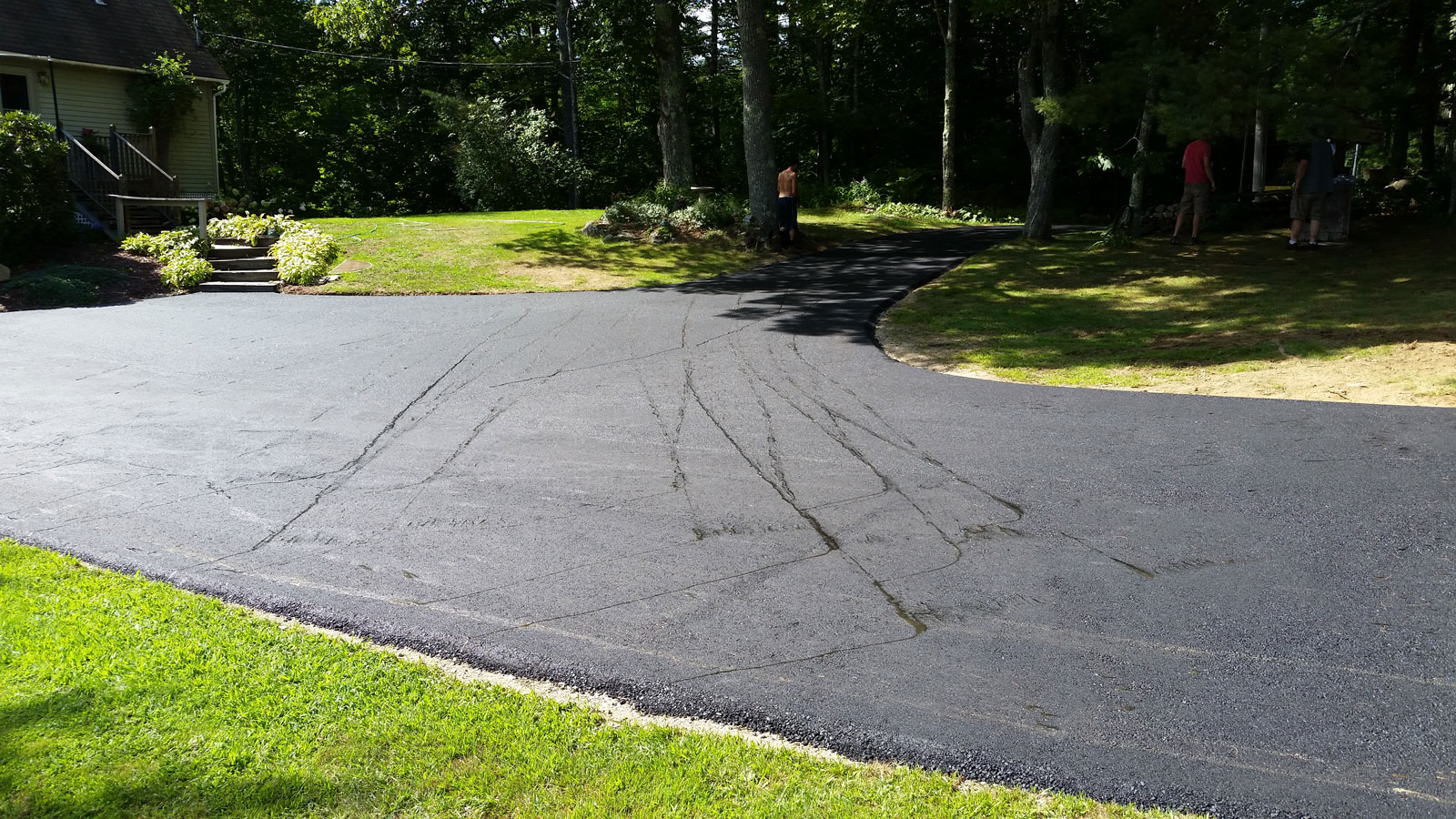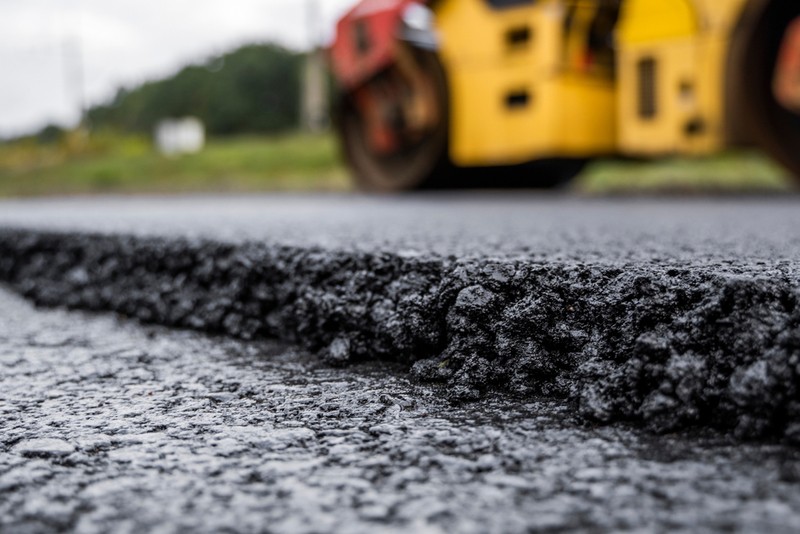Enhance Durability: Warm Mix Asphalt Sealing for Angled Parking Frameworks
Enhance Durability: Warm Mix Asphalt Sealing for Angled Parking Frameworks
Blog Article
Hot Mix Asphalt: A Lasting Service for Sidewalk
Hot Mix Asphalt (HMA) has arised as a leading sustainable option for pavement options, providing a myriad of environmental benefits and cutting-edge modern technologies. As the demand for eco-friendly building and construction practices expands, discovering the nuances of HMA's sustainability can supply important understandings right into the future of pavement services.
Ecological Benefits of Warm Mix Asphalt

Furthermore, Hot Mix Asphalt helps to mitigate city heat island results. Its dark color takes in sunshine, lowering the amount of heat reflected back right into the ambience contrasted to lighter-colored sidewalks. This can decrease ambient temperatures in metropolitan locations, lowering the demand for cooling and eventually minimizing power consumption.
In addition, Warm Mix Asphalt contributes to improved stormwater administration. Its porous nature enables water to reenergize and infiltrate the sidewalk groundwater materials, lowering drainage and the risk of flooding. These ecological advantages make Warm Mix Asphalt a sustainable option for paving roadways and highways.
Energy Efficiency in HMA Manufacturing
Is power performance a vital variable in the production of Warm Mix Asphalt (HMA)? Definitely. Power plays a substantial function in the production of HMA, affecting both price and ecological sustainability. One vital facet of power performance in HMA production is making use of warm mix asphalt (WMA) innovations (hot mix asphalt). WMA permits the blending and placement of asphalt at reduced temperature levels compared to typical hot mix asphalt, leading to reduced power consumption during production. This procedure not just lowers fuel usage yet additionally reduces greenhouse gas exhausts, making it a more ecologically pleasant choice.
Furthermore, advancements in plant technologies have actually led to more energy-efficient HMA production processes. By enhancing power usage in HMA manufacturing, the industry can reduce its carbon impact while preserving premium pavement materials.
Recyclability of Hot Mix Asphalt
The recyclability of Warm Mix Asphalt (HMA) is an essential element of its sustainability and long-term ecological effect. HMA is just one of one of the most recycled materials in the USA, with over 100 million lots of redeemed asphalt sidewalk (RAP) being recycled yearly in new pavement construction. Reusing HMA provides a number of ecological advantages, such as lowering the requirement for virgin products, decreasing power intake during production, and reducing the quantity of waste sent out to land fills.
The process of recycling HMA involves milling the existing pavement, crushing it into smaller pieces, and mixing it with new accumulation and asphalt binder to produce a recycled mix. This recycled mix can frequently perform along with or even much better sites than conventional HMA, while needing fewer resources and generating lower greenhouse gas discharges. By integrating RAP into new pavement jobs, road companies can save all-natural sources, minimize expenses, and minimize the environmental impact of roadway construction his comment is here and upkeep activities. Overall, the recyclability of HMA plays a considerable function in advertising sustainable practices within the sidewalk market.

Long-Term Efficiency of HMA
Asphalt sidewalks show resilience and resilience over an extensive period, reflecting the long-term performance of Warm Mix Asphalt (HMA) Additionally, improvements in HMA innovation, such as the usage of polymer-modified binders and cozy mix asphalt, have actually further improved the resilience and longevity of HMA sidewalks. By focusing on high quality construction and upkeep methods, HMA continues to confirm itself as a affordable and sustainable service for long-lasting sidewalk infrastructure.

HMA: Toughness and Sustainability
Demonstrating both toughness and sustainability, Warm Mix Asphalt (HMA) has become a cornerstone in the building and construction of lasting pavement facilities - commercial parking lot paving. HMA's durability stems from its ability to endure heavy loads, severe weather, and high web traffic quantities, making it a trustworthy choice for roadways, freeways, and airport terminal paths. The composition of HMA, which commonly includes aggregates, binder, and filler, plays a vital function in boosting its durability and resistance to tear and use
Furthermore, HMA's sustainability depends on its recyclability and energy-efficient manufacturing procedure. The ability to reuse recovered asphalt sidewalk (RAP) in new HMA mixes minimizes the need for virgin products and lessens the ecological effect of pavement construction and maintenance. Furthermore, the energy performance of creating HMA lies in its lower blending temperatures contrasted to other sidewalk materials, causing decreased power intake and greenhouse gas exhausts.
Conclusion
Finally, warm mix asphalt (HMA) uses a lasting service for sidewalk with its environmentally friendly qualities. HMA's recyclability, energy efficiency in production, and long-lasting durability his explanation make it an eco-friendly choice for roadway building. By conserving all-natural resources, reducing waste, and decreasing greenhouse gas discharges, HMA plays an essential duty in advertising sustainability in infrastructure growth. Its ability to minimize metropolitan heat island impacts further highlights its relevance in producing environmentally conscious and resilient sidewalk systems.
HMA is one of the most recycled products in the United States, with over 100 million tons of redeemed asphalt pavement (RAP) being recycled annually in new pavement building.The procedure of recycling HMA includes milling the existing pavement, crushing it into smaller pieces, and mixing it with new aggregate and asphalt binder to develop a recycled mix.Asphalt pavements demonstrate sturdiness and resilience over a prolonged duration, mirroring the lasting performance of Warm Mix Asphalt (HMA) Additionally, innovations in HMA innovation, such as the use of polymer-modified binders and warm mix asphalt, have even more improved the sturdiness and longevity of HMA sidewalks. The ability to reuse recovered asphalt pavement (RAP) in new HMA blends lowers the need for virgin materials and reduces the ecological effect of pavement construction and maintenance.
Report this page